The 28 priciest government projects in the UK and beyond
Mind-blowingly expensive state-driven initiatives
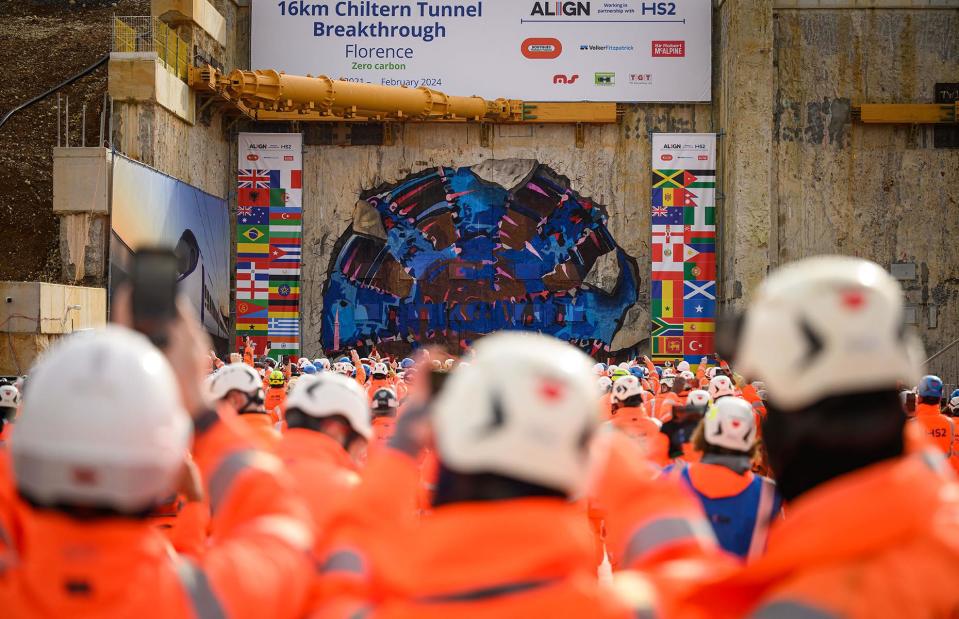
Leon Neal/Getty Images
When it comes to vital infrastructure, defence and other critical spending priorities, governments around the world have been known to dig deep – with public money clearly no object.
In fact, the expenditure for some megaprojects can be truly mind-blowing, with grand totals that comfortably stretch into hundreds of billions.
From post-disaster reconstruction efforts to high-speed rail links, read on to discover the astronomical projects that have been fully or partly funded by the state in 28 countries around the world.
All dollar values in US dollars unless otherwise stated.
Ireland – new children's hospital: approximately $2.4 billion (£1.9bn)

BDP
Dublin's new children's hospital is the Irish government's most expensive individual project to date. Once completed, it will also be the world's most expensive medical facility, with costs ballooning from an original estimate of €800 million ($868m/£684m) to €2.24 billion ($2.4bn/£1.9bn) as of February this year.
At that time, substantial completion had been slated for October of this year, delayed from the original timeline of November 2022, but the contractor has since revised the schedule to February 2025. This additional delay could mean patients won’t be seen in the new facility until summer 2025, while officials doubt treatments will be available that soon.
Former prime Minister Leo Varadkar warned the government wouldn't accommodate any additional budget increases, saying €2.24 billion is the "maximum allocation". However, the construction firm still has €600m ($651m/£510m) worth of claims awaiting assessment and resolution.
Portugal – Lisbon–Porto high-speed rail line: $6 billion (£4.7bn) estimated
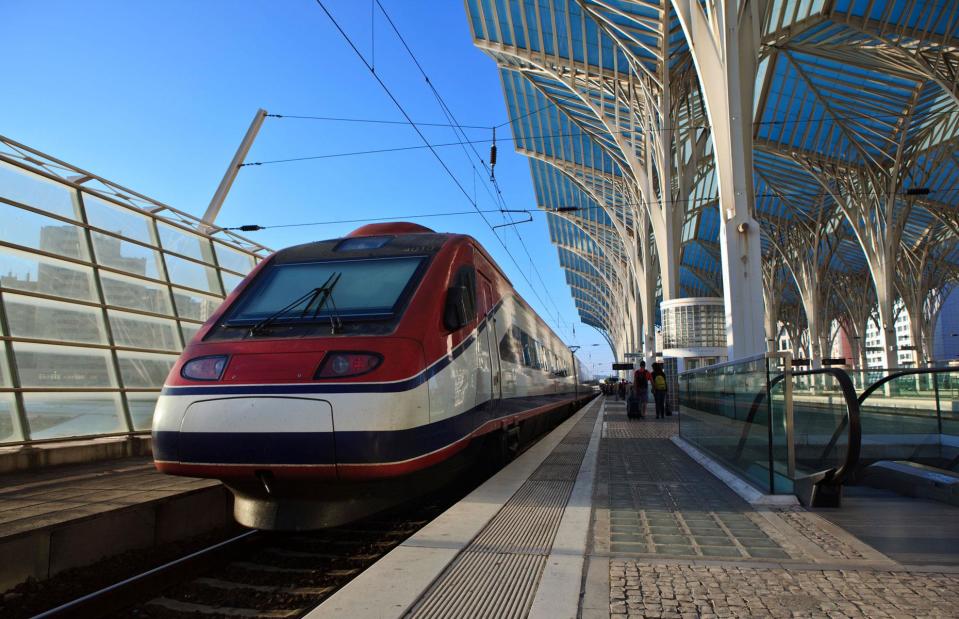
Luis Elvas/Alamy
A new high-speed rail line linking Lisbon to Porto in just 75 minutes will likely become the most expensive government project in Portuguese history. Initial cost estimates put the project, divided into three phases and scheduled for completion in 2030, at €4.5 billion ($4.8bn/£4bn).
However, that has already grown to €5.5 billion ($6bn/£4.7bn). Phase 1 of the line, from Porto to Soure, went to tender in early 2024, with the government seeking a public-private partnership worth nearly €2 billion ($2.2bn/£1.7bn) to fund, design and build the initial line.
Government funding, including money from the EU, will cover the remaining costs of the estimated €3.6 billion ($3.9bn/£3.1) Phase 1 work.
Denmark – Fehmarn Belt fixed link: $10.9 billion (£8.6bn) estimated
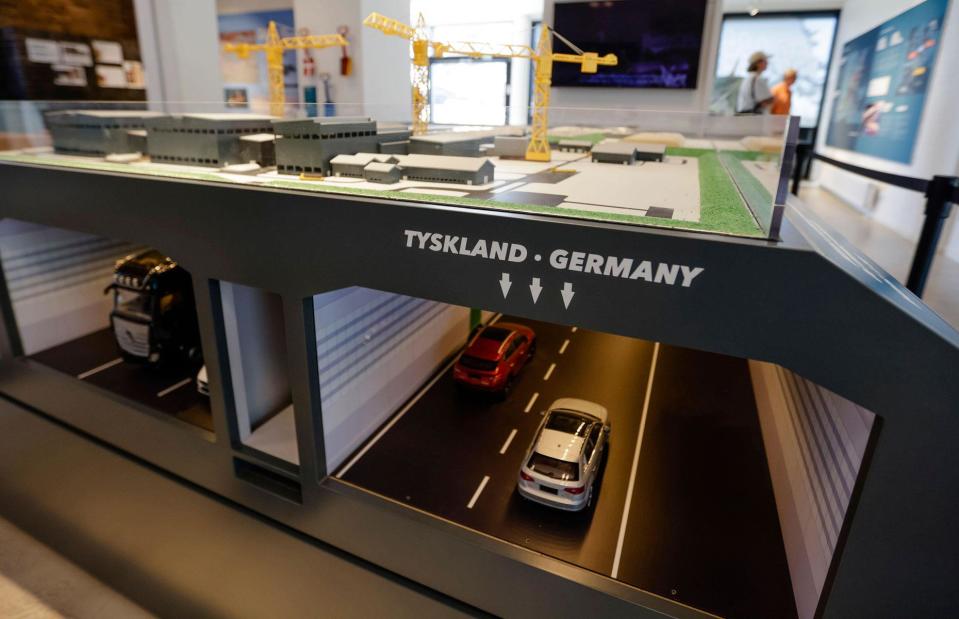
dpa picture alliance/Alamy
Denmark's most expensive government-funded project is the Fehmarn Belt fixed link. Slated to open in 2029, the 11-mile (18km) road and rail link will connect the Danish island of Lolland to Germany's Fehmarn island and feature the world's longest immersed tube (as opposed to bored or mined) tunnel.
Denmark is bearing the bulk of the project's €10 billion ($10.9bn/£8.6bn) cost, though it reportedly plans to recoup the expenditure by levying tolls. The EU is contributing €1.1 billion ($1.2bn/£940m) toward the project.
The project achieved a major milestone this spring, completing the seabed trench for the immersed tube tunnel segments. The first of these will be lowered into the trench later this year. It was the biggest dredging operation in Denmark’s history.
Austria – Brenner Base Tunnel: $11.4 billion (£9bn) estimated
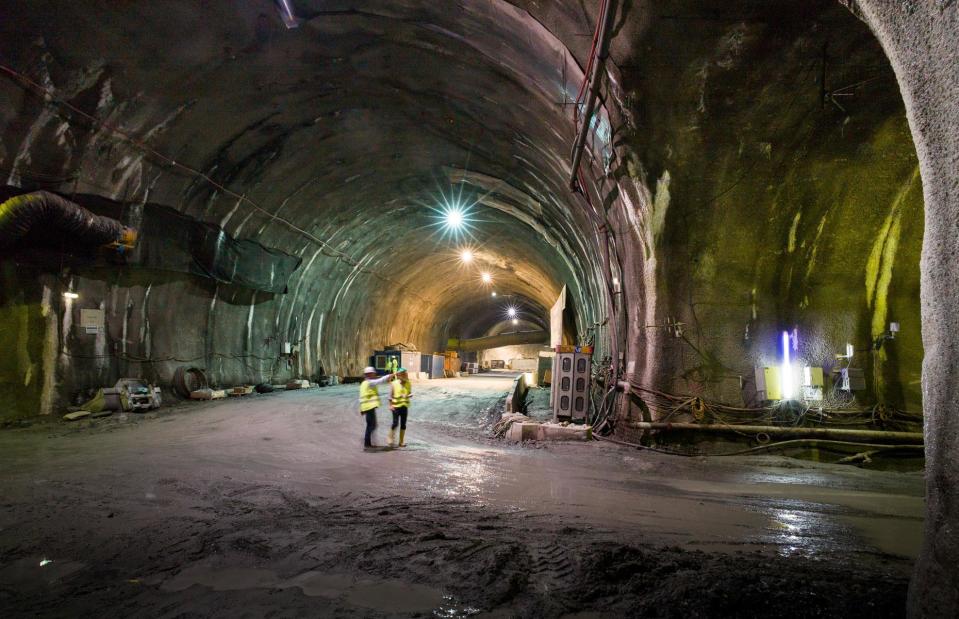
dpa picture alliance/Alamy
The Brenner Base Tunnel is hands-down the priciest infrastructure project in Austrian history. Fortunately, its estimated €10.5 billion ($11.4bn/£9bn) cost is being shared by Austria, the Italian government, and the EU.
Due for completion in 2032, the Alpine tunnel will connect Innsbruck in Austria with the Italian village of Fortezza. At 34 miles (55km), it's set to be one of the longest rail tunnels in the world.
Malaysia – Putrajaya: $13 billion (£10.2bn)

IZZ HAZEL/Shutterstock
Creating a new administrative capital from scratch doesn't come cheap, as the Malaysian government is undoubtedly well aware.
Named in honour of the country's first prime minister, work on Putrajaya, located 15 miles (25km) south of Kuala Lumpur, began in 1995. It was declared a federal territory in 2001.
The project was completed in 2005 and cost around $8.1 billion (£6bn), which works out at $13 billion (£10.2bn) in today's money. It remains the government's priciest-ever project.
Singapore – Tuas Port: $14.8 billion (£11.6bn) estimated
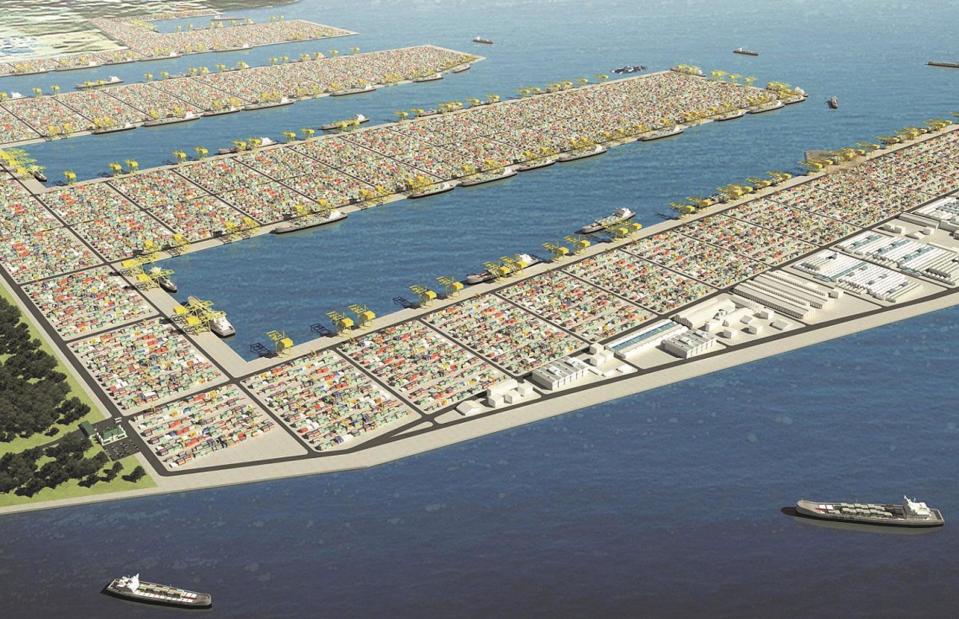
Marine and Port Authority of Singapore
The Singaporean government is ploughing $14.8 billion (£11.6bn) into a vast state-of-the-art mega port. The goal? To near-double the city-state's handling capacity and cement its position as one of the world's foremost maritime trading hubs.
The project is predicted to take two decades to finish, though the first phase is expected to be completed by 2027.
Philippines – New Manila International Airport: $15 billion (£11.8bn) estimated
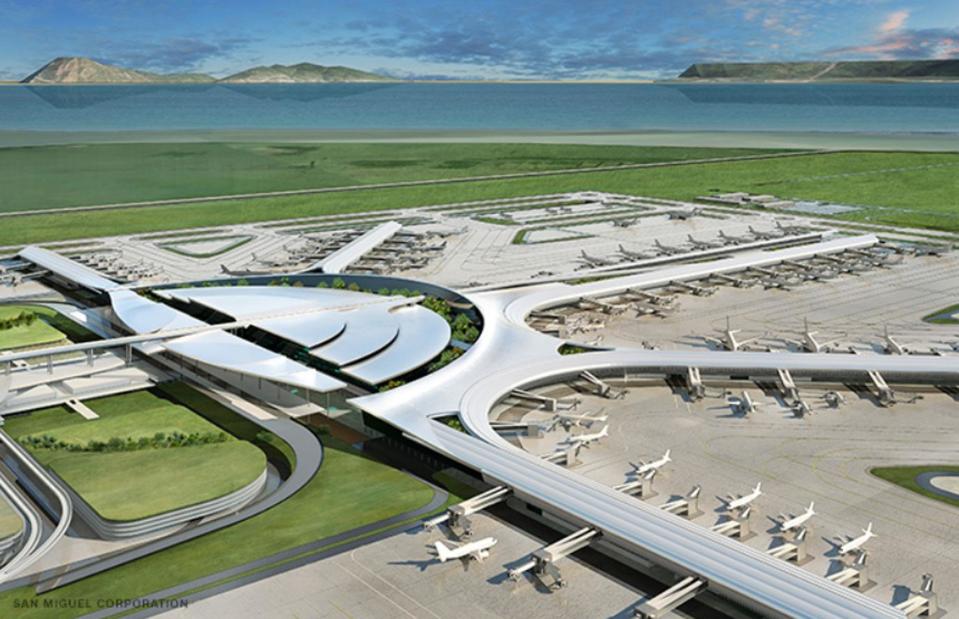
San Miguel Corporation
The Philippines is going all out with the new airport it's constructing for its capital Manila, which is projected to cost $15 billion (£11.8bn).
With the capacity to handle 100 million passengers a year, the international hub in the Bulacan province to the north of the capital is being built by billionaire Ramon Ang's San Miguel Corporation. It will commence operations in 2027.
Switzerland – Gotthard Base Tunnel: $15.4 billion (£11.8bn)

Pier Marco Tacca/Getty Images
Currently the world's longest rail tunnel – not to mention the deepest – the Gotthard Base Tunnel is Switzerland's largest ever infrastructure project.
Completed in 2016 for the equivalent of $15 billion (£11.8bn) in today's money, the 35.5-mile (57km) Alpine tunnel has been hailed a marvel of engineering. Even marvels have their problems, though. A train derailment in summer 2023 resulted in a partial closure of the tunnel, and repair work is on schedule to facilitate a September 2024 reopening.
Mexico – Tren Maya: up to $20 billion (£15.7bn) estimated
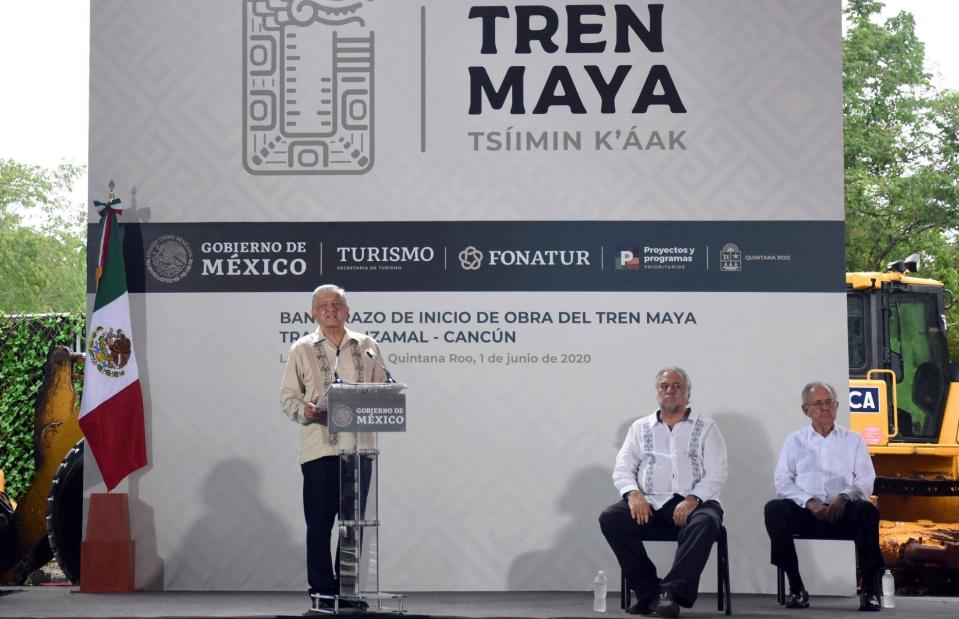
ELIZABETH RUIZ/AFP via Getty Images
The Tren Maya ("Maya Train") is President Andrés Manuel López Obrador's flagship project, with the final bill anticipated to be around $20 billion (£15.7bn). Bloomberg reports this is around 70% higher than the previously stated cost of the work.
With the goal of boosting tourism, the 950-mile (1,500km) railway will traverse the Yucatán Peninsula, connecting beach destinations and ancient Mayan sites.
Partially opened in December 2023 with limited service, the project hasn't been without its detractors. For one thing, it's sparked a barrage of criticism for its impact on the environment, with reports claiming it's resulted in the destruction of 2,500 hectares of tropical rainforest.
South Africa – Kusile and Medupi Power Station project: $24.3 billion (£19.1bn) estimated
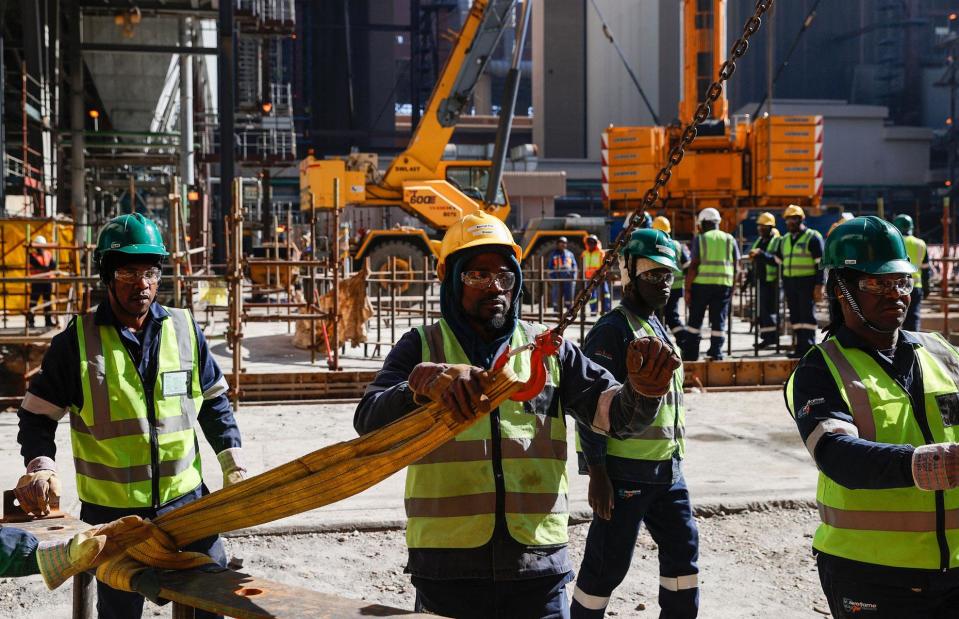
PHILL MAGAKOE/AFP via Getty Images
As South Africa endures a protracted energy crisis, its flagship infrastructure project – which consists of two giant coal-fired power stations, the Kusile and Medupi plants – remains incomplete.
Construction began in 2007 and both power stations were expected to be ready by 2014. However, everything from corruption to technical blunders has led to arduous delays.
Kusile is expected to be fully operational later this year, although three units will need to be taken offline for repairs starting in October. Meanwhile, despite reaching project completion, corrections to design defects at Medupi won't be resolved until 2027. Unsurprisingly, costs have spiralled, with the total bill for both plants estimated at an enormous $24.3 billion (£19.1bn).
New Zealand – 2011 Christchurch earthquake reconstruction: $24.7 billion (£19.4bn)
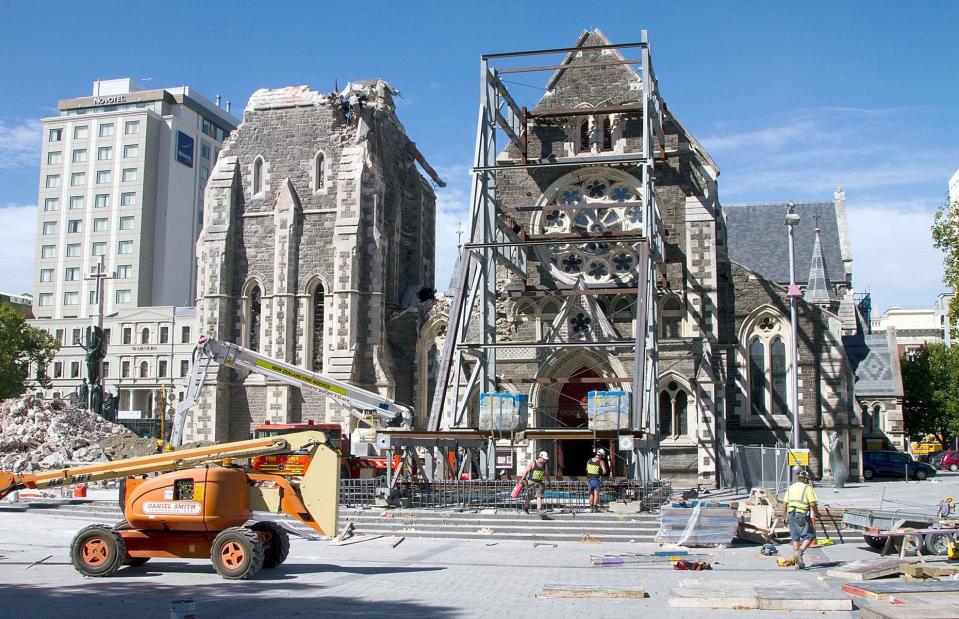
Marty Melville/AFP via Getty Images
The devastating Christchurch earthquake claimed 185 lives and injured thousands in February 2011, as well as destroying or severely damaging up to 80% of the city centre and much of its infrastructure in the process.
Initially, government officials pledged NZ$8.5 billion ($5bn/£4bn) to rebuild the city. Two years later that had jumped to NZ$15bn ($9.3bn/£7.3bn) with the entire reconstruction effort, which is ongoing, estimated at NZ$40 billion ($24.7bn/£19.4bn).
Canada – James Bay Project Phase I: $26.6 billion (£21bn)
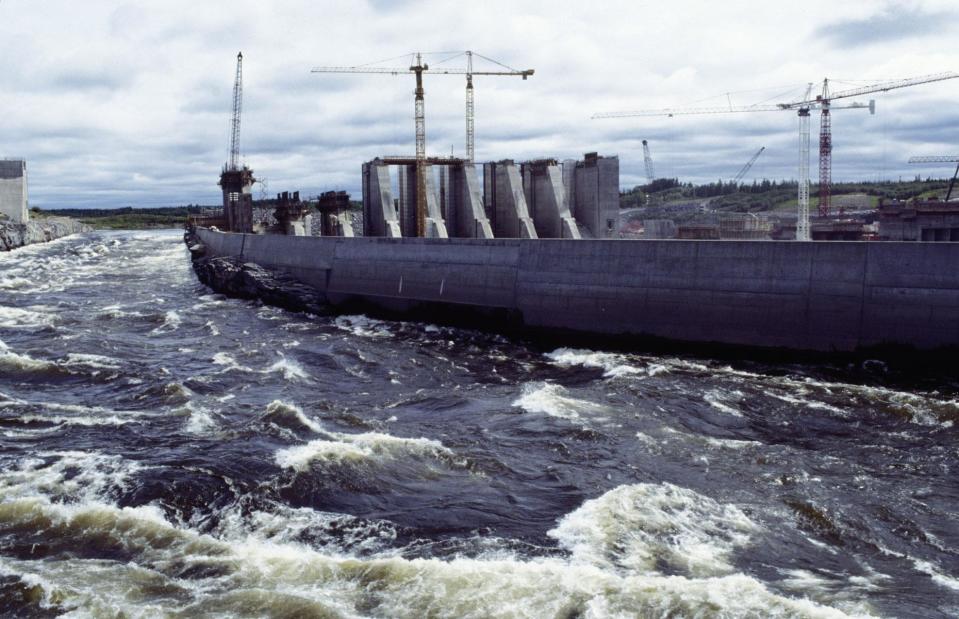
Christopher J. Morris/CORBIS/Corbis via Getty Images
Canada has a long history of nailing large engineering projects. None of them, however, has eclipsed the cost of Phase 1 of the James Bay Project, which was completed in 1984 by state-owned utility Hydro-Québéc and the government of Québec.
And no wonder. The first phase of the controversial hydroelectric development on the east coast of James Bay, which displaced Cree and Inuit locals, came in at a total of C$13.7 billion, which is $26.6 billion (£21bn) in today's money.
Italy – Turin–Lyon high-speed railway: $27 billion (£21.2bn) estimated
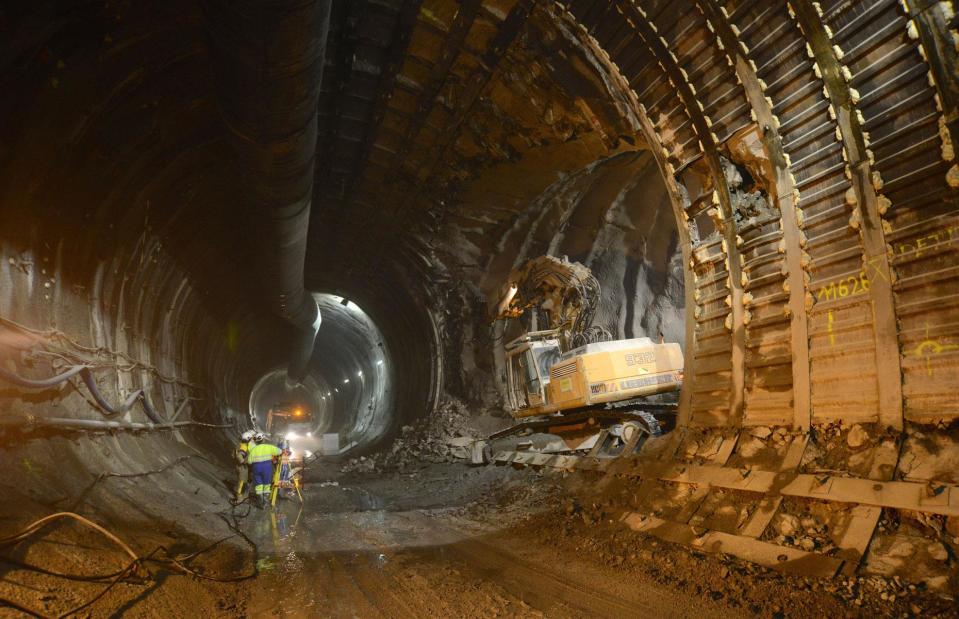
Andia/Alamy
Italy is in the midst of an infrastructure construction boom, having smashed the record for large projects in 2022, with the Turin-Lyon high-speed railway the most costly of them all.
Scheduled for completion in 2032, the 170-mile (270km) rail line will cross the Alps and feature the world's longest train tunnel. Opponents have slammed the project's cost, with the final bill expected to come in at least €25 ($27bn/£21.2bn). Fortunately, Italy is sharing the cost with France and the EU.
Spain – Madrid Nuevo Norte: $27.4 billion (£21.5bn) estimated
![<p>Diario de Madrid/Wikimedia Commons [CC BY 4.0]</p>](https://s.yimg.com/ny/api/res/1.2/bNoPHeWaPfCvZQj2mP3H0Q--/YXBwaWQ9aGlnaGxhbmRlcjt3PTk2MDtoPTYxOQ--/https://media.zenfs.com/en/lovemoney_uk_264/8d57d923377c0c2720052a4b3ec42330)
Diario de Madrid/Wikimedia Commons [CC BY 4.0]
Madrid Nuevo Norte, Europe's largest regeneration scheme, is transforming the neglected northern sector of the Spanish capital.
Projected to cost €25.2 billion ($27.4bn/£21.5bn), more than half of which will be put up by the private sector, the sustainability-focused project encompasses 570 acres of brownfield land that will eventually feature gleaming towers, low-rise blocks, and plenty of green space.
Given its scope, the scheme will take over two decades to finish, with an anticipated completion date of 2045.
Indonesia – Nusantara: $35 billion (£27.5bn) estimated

ADEK BERRY/AFP via Getty Images
The most expensive government projects tend to have strong private-sector backing, and Indonesia's proposed new capital city, Nusantara, is no exception. In fact, 80% of the $35 billion (£27.5bn) required to build the city will be provided by private investors.
With Jakarta sinking, the Indonesian government plans to relocate to the island of Borneo. However, the top two officials in charge of building Nusantara unexpectedly resigned in June of this year, with one saying the decision was due to being unable to deliver the project, making way for speculation about the city’s feasibility.
The new capital is set for completion in 2045, 100 years after Indonesia declared independence from the Netherlands.
France – Grand Paris Express: $39 billion (£30.6bn) estimated
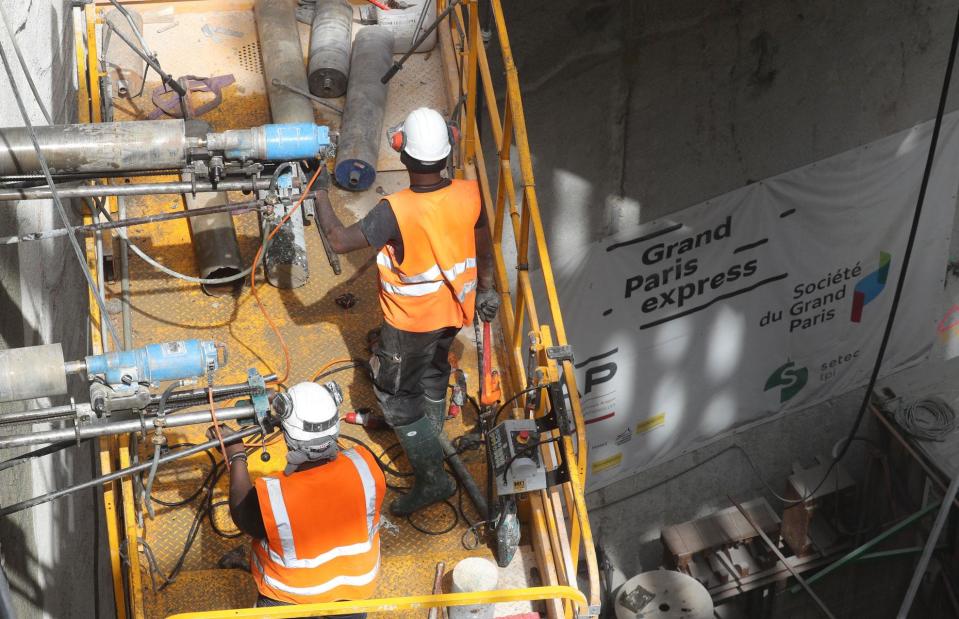
LUDOVIC MARIN/AFP via Getty Images
Beating grand French infrastructure projects such as the Maginot Line and Channel Tunnel in terms of sheer cost is the aptly named Grand Paris Express.
This epic undertaking, agreed in 2011, will see the Paris Métro double in size by 2030 and has already involved the drilling of more than 120 miles (190km) of tunnels. The project's cost has mushroomed over the years, and it's now expected to set the French state back around €36.1 billion ($39bn/£30.6bn).
Germany – Future Combat Air System (FCAS) fighter jet: $43.4 billion (£34bn) estimated
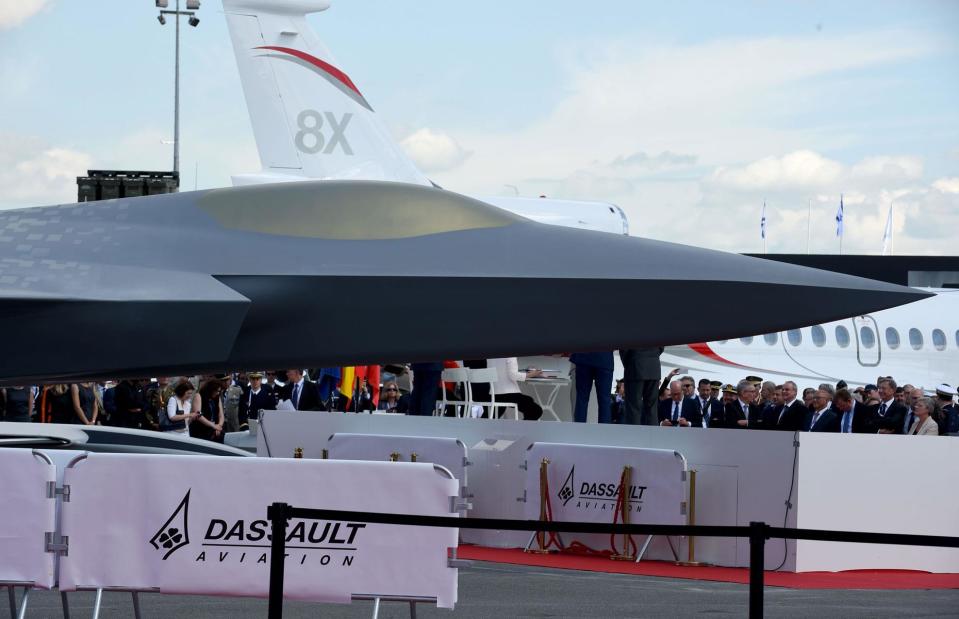
ERIC PIERMONT/AFP via Getty Image
The war in Ukraine led to a flurry of defence spending, with a number of countries upping their military expenditure.
In early 2023, the German government said it would allocate an eye-watering €40 billion ($43.4 billion/£34bn) in the years leading up to 2040 to develop a next-generation fighter jet with France.
The jet is part of the €100 billion ($108bn/£84.8bn) Future Combat Air System programme established in 2017 between French President Emmanuel Macron and Germany's then-Chancellor Angela Merkel.
Norway – E-39 Coastal Highway Route: up to $47 million (£36.9bn)?

The Norwegian Public Roads Administration/Vianova
A plan to replace seven ferry crossings along Norway's west coast with a 700-mile (1,100km) route that features "floating" tunnels and bridges will cost $47 billion (£36.9bn), according to estimates.
That's if it's ever completed, though. There are reportedly plans to scale back the project due to surging costs, though it could be re-extended again in the future.
Brazil – Itaipu Dam: $59.2 billion (£46.5bn)
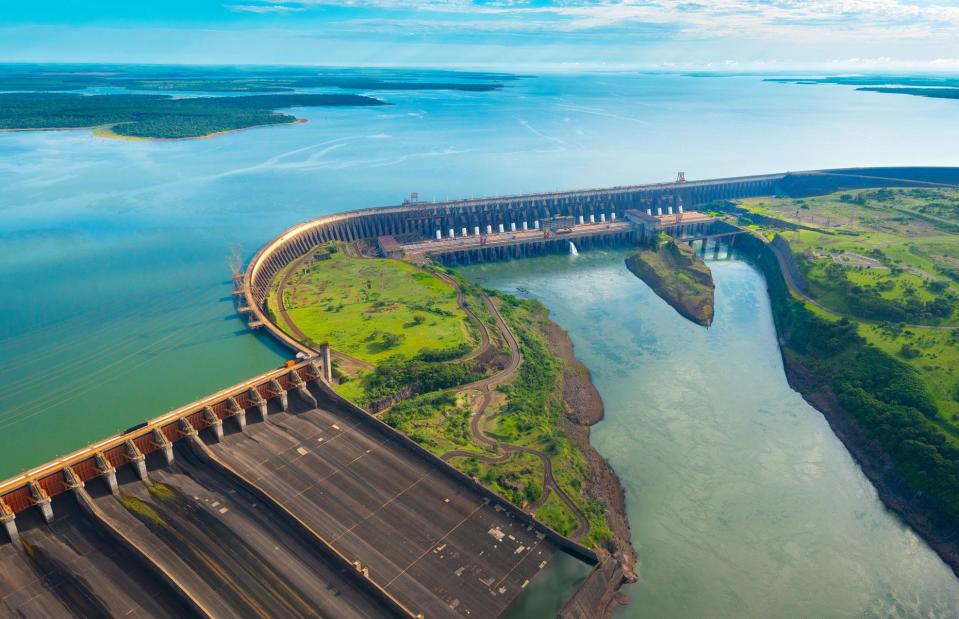
Jose Luis Stephens/Shutterstock
The most expensive government project in Brazilian history is the Itaipu Hydroelectric Dam, the world's second most productive hydroelectric facility. Completed in 1982 and located near the Paraguay border, the engineering wonder cost $19.6 billion at the time, the equivalent of $59.2 billion (£46.5bn) in today's money.
A notable runner-up is the federal capital of Brasília, which was built from scratch in the 1950s. A cost of $1.5 billion was estimated by Brazil's Minister of Finance in 1960, which is $17.5 billion (£13.7bn) in today's money, but others say the exact cost is unknown.
Russia – Sochi 2014 Winter Olympic Games: $69.8 billion (£55bn)

ALEXEY DRUZHININ/AFP via Getty Images
Mired in corruption, the 2014 Winter Olympic Games in Sochi was the most expensive edition of the sporting event by some way, costing a staggering $69.8 billion (£54.8bn) in today's money.
Money was lavished on the Olympic Village and competition venues, as well as on transport networks, hotels, and power supplies, with the hope of turning Sochi into a destination for tourists.
Private companies shouldered some of the expense. However, a 2015 study suggested Russian taxpayers would be forking out a billion dollars a year for the foreseeable future to cover the Games' debts.
UAE – Al Maktoum International Airport: up to $80 billion (£62.8bn)?

MARWAN NAAMANI/AFP via Getty Images
Concerned that the Dubai International Airport could soon reach capacity, officials aimed to build the world's largest airport in preparation, focusing on expanding the city’s smaller second airport by 2025.
Work on Al Maktoum International Airport had started but was halted in 2018 due to a dip in forecasted visitor numbers. The decision was made after the nation had already spent roughly $33 billion (£26bn) on the first phase, which began in 2010 and initially concentrated on cargo operations.
With the UAE’s tourism sector fully recovered from the COVID-19 Pandemic, government officials confirmed in April 2024 that the expansion is back on. Sheikh Mohammed bin Rashid Al Maktoum announced the project will cost around $35 billion (£27.5bn), however, previous estimates put the cost at around $80 billion (£62.8bn).
Australia – Melbourne Suburban Rail Loop: $81 billion (£63.6bn) estimated
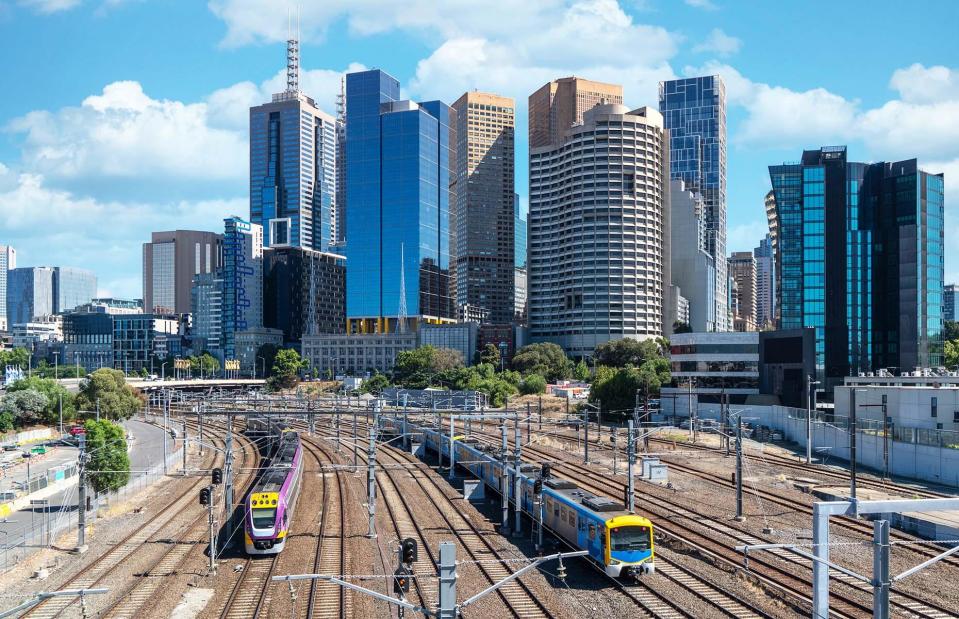
anek.soowannaphoom/Shutterstock
Melbourne's Suburban Rail Loop is a 56-mile (90km) orbital line that will link the city's central business district with the outer suburbs. Critics have derided Australia's most extensive infrastructure project, describing it as a "rail loop to nowhere", while the completion date could run as late as 2085.
And it just keeps getting more expensive. Presumably due to increased inflation, the link's estimated cost now stands at a jaw-dropping A$125 billion ($81bn/£63.6bn), significantly up on the A$50 billion ($32.7bn/£25.7bn) proposed in 2018.
More recently, the state of Victoria is considering a new tax to help cover the costs, an idea that's been met with opposition by rival party politicians and others who have questioned the future of the project.
Japan – Fukushima disaster clean-up: $82 billion (£64.4bn)
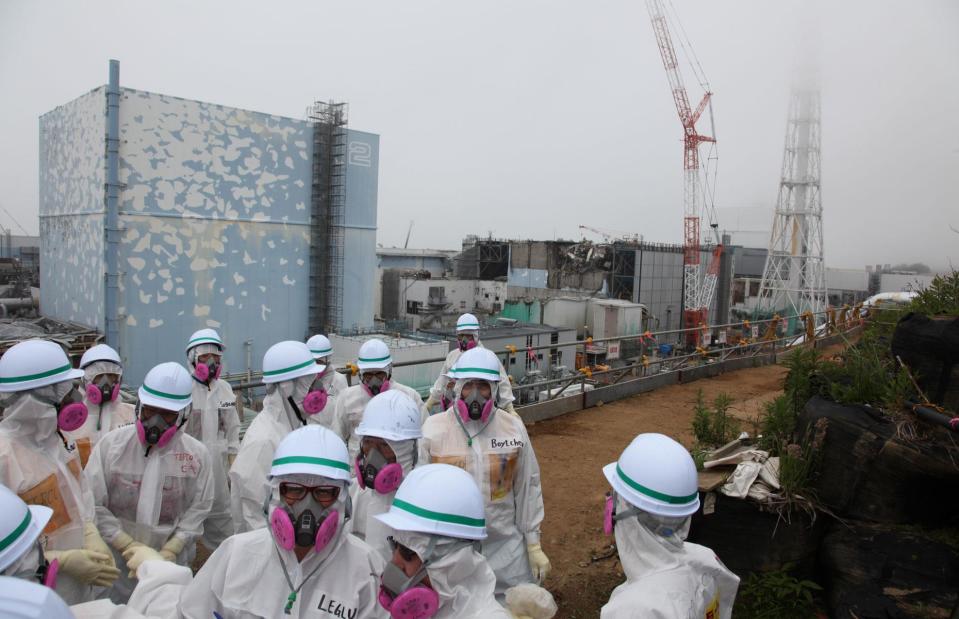
Pallava Bagla/Corbis via Getty Images
Japan has delivered numerous wow-factor infrastructure projects over the years, from the bullet train to the Honshu-Shikoku Bridge.
The most impressive – and expensive – of them all is the clean-up operation that was undertaken following the 2011 Fukushima nuclear disaster. The nation has already spent over $82 billion (£64.4bn) on the mammoth task.
Sweden – Gothenburg upgrade: $108 billion (£84.8bn)
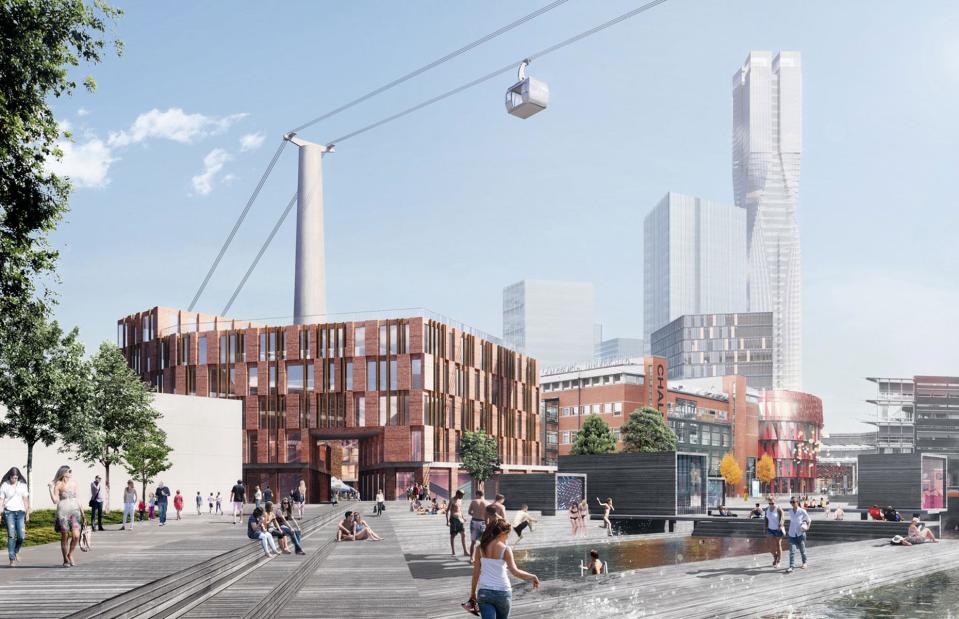
Henning Larsen Architects
Sweden's second-largest city, Gothenburg, is currently being treated to the mother of all makeovers.
Between now and 2035, an eye-popping €100 billion ($108bn/£84.8bn) will be invested in the city's revamp, which will include 105,000 new homes, two new tunnels, an impressive cable car system, and a new bridge in the centre.
No other infrastructure programme in Swedish history comes close in terms of cost.
UK – HS2: $116.5 billion (£91.5bn) estimated
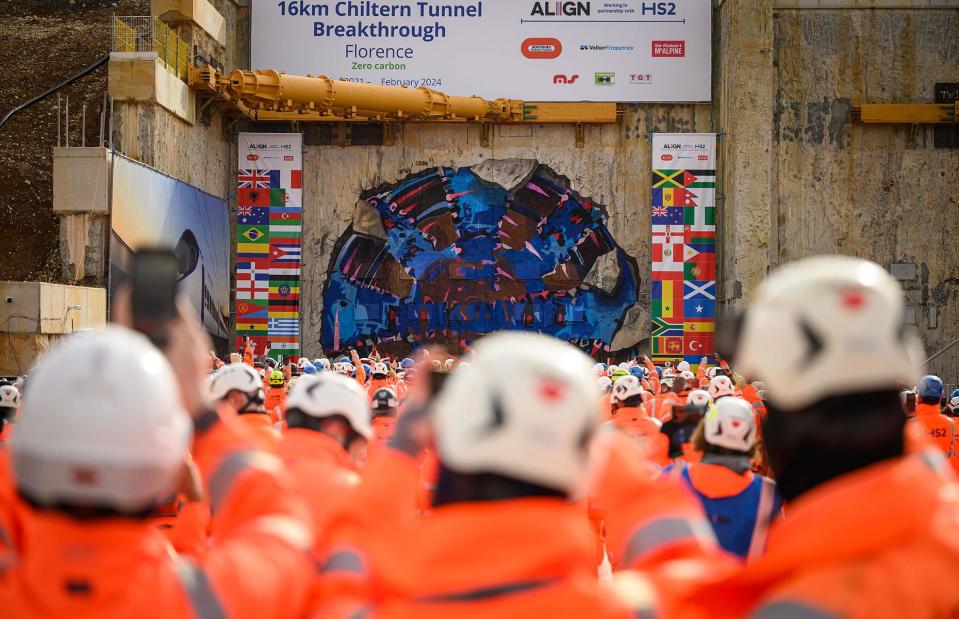
Leon Neal/Getty Images
HS2, the UK's high-speed railway linking London to cities in the centre and north of England, is massively over budget, hugely delayed, and highly divisive.
Initially set to cost $47.5 billion (£37.3bn), the priciest infrastructure project in British history is now expected to burn through $116.5 billion (£91.5bn), while the first phase connecting London to Birmingham may not be ready until 2033, seven years behind schedule. Meanwhile, plans to add an additional line between London and Leeds, and the extension of the line from Birmingham to Manchester have been scrapped entirely.
India – Bharatmala Pariyojana: $130 billion (£102bn) estimated
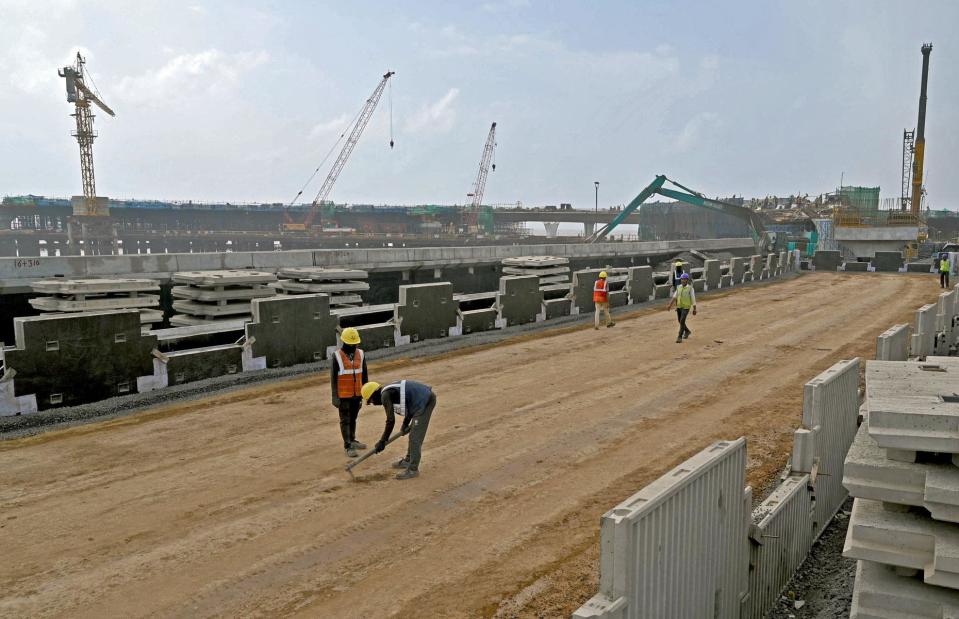
INDRANIL MUKHERJEE/AFP via Getty Images
Bharatmala Pariyojana (also referred to as the India Garland Project) is India's answer to America's Interstate Highway System project. It involves the construction of a breathtaking 52,000 miles (83,700km) of highways, borders, tunnels, and bridges to create a national network that reflects the country's rapid development.
Initiated in 2017, the project is taking longer than anticipated. The first phase was due to be finished in 2022 but is now five years behind schedule.
The cost of the entire project has soared due to the delays and currently stands at nearly $130 billion (£102bn), almost double the original estimate.
USA – Lockheed Martin F-35 Lightning II fighter jet: $1.7 trillion (£1.3tn)
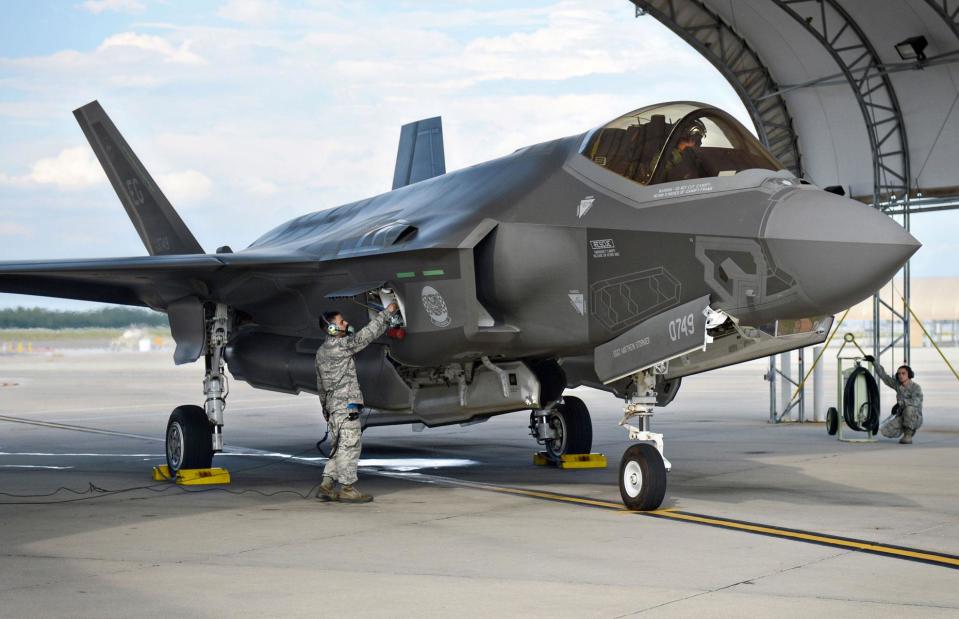
US Air Force Photo/Alamy
Forget the Hoover Dam, Manhattan Project, and Apollo Program: the most expensive government project in US history is actually the development of the Lockheed Martin F-35 Lightning II fighter jet.
The weapons system is a decade behind schedule and 80% over budget, bringing its cost to an almost unimaginable $1.7 trillion (£1.3tn). On the upside, America's allies are clamouring to place orders for the jet, which could make the colossal expense more than worthwhile.
China – Belt and Road Initiative (BRI): up to $8 trillion (£6.3tn) estimated

STR/AFP via Getty
A maritime Silk Road for the 21st century, the Chinese government's Belt and Road Initiative (BRI) is now a decade old and has grown to involve over 150 countries.
A trillion dollars has already been spent on the mammoth global infrastructure project, with official estimates suggesting the ongoing project could cost as much as $8 trillion (£6.3tn).
That said, the BRI has been plagued with problems since its inception and will likely be considerably scaled back as a result.
From megaproject to mega fail: discover the global megaprojects that went seriously wrong

 Yahoo Finance
Yahoo Finance 